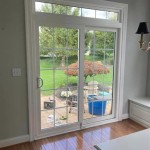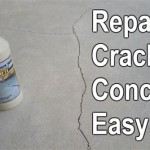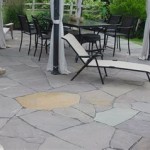Sliding Patio Door Locks: Security Bolt Sizes and Considerations
Sliding patio doors offer convenient access to outdoor spaces and ample natural light. However, their design can sometimes present security vulnerabilities. Understanding the different types of locks available and their corresponding bolt sizes is crucial for enhancing the security of these entry points. This article explores the various security bolt options for sliding patio doors and provides guidance on choosing the appropriate size and type for individual needs.
Standard sliding patio doors typically come equipped with a latch and a lock. The latch is a spring-loaded mechanism that engages with the strike plate on the door frame when the door is closed. The lock, usually located near the handle, provides additional security by extending a bolt into the door frame. However, this factory-installed lock is often insufficient to deter forced entry. Therefore, supplementary locking mechanisms are frequently necessary.
One common security upgrade is the installation of a sliding patio door security bar. These bars are adjustable to fit various door widths and prevent the door from sliding open. While they are not technically bolts, they provide a significant deterrent. When choosing a security bar, ensure it is constructed from sturdy material, such as heavy-duty aluminum or steel, and fits snugly within the door track.
Another security measure employs auxiliary locking bolts. These bolts, often available in different sizes, offer an extra layer of protection by anchoring the door to the frame at multiple points. Common sizes include ½ inch, ¾ inch, and 1 inch. The bolt length should be appropriate for the door frame material and provide sufficient depth for secure engagement. Too short a bolt may not offer adequate security, while too long a bolt may damage the frame.
One type of auxiliary lock uses a vertical bolt. Vertical bolts engage with a strike plate installed at the top or bottom of the door frame. They offer increased resistance against lifting and prying attempts. These are particularly effective in conjunction with a security bar or chain lock.
Another option is the use of foot locks or floor-mounted bolts. These are installed at the bottom of the door and engage with a strike plate installed in the floor. They prevent the door from being lifted or forced open from the bottom. Foot locks are a robust solution, especially for patio doors located on ground floors. Like vertical bolts, they are available in various sizes, with common options being ½ inch, ¾ inch, and 1 inch. Choosing the correct size depends on the door and floor construction.
Some sliding patio door locks utilize keyed cylinder locks. These provide a higher level of security than standard latch locks, offering greater resistance to picking and bumping. Keyed cylinder locks often feature a deadbolt mechanism, which extends a solid bolt into the door frame, providing significant protection against forced entry.
While specific bolt size charts for sliding patio door locks are not typically standardized across manufacturers, understanding the general size considerations is essential. For example, a ½ inch bolt may suffice for lightweight aluminum frames, while a ¾ inch or 1-inch bolt might be more suitable for heavier wooden or vinyl frames. Consult with a locksmith or hardware professional for recommendations based on the specific door and frame materials.
When selecting security bolts, the material is a crucial factor. Bolts made from hardened steel offer superior resistance to cutting and drilling compared to brass or aluminum. Look for bolts with a hardened finish or coating for added corrosion resistance, especially in coastal environments.
Proper installation is critical for the effectiveness of any security measure. Ensure the strike plates are securely fastened to the door frame with appropriate screws. Pilot holes should be drilled to prevent splitting the frame material. For complex installations, consider seeking professional assistance from a locksmith or qualified handyman.
Beyond bolt size and material, other factors contribute to overall patio door security. Reinforcing the door frame itself can deter forced entry attempts. Adding security film to the glass panels can prevent shattering and make it more difficult for intruders to gain access. A properly installed and maintained alarm system can also enhance security by alerting homeowners and authorities in case of a break-in.
Regular maintenance of locking mechanisms is essential for ensuring their continued effectiveness. Lubricate moving parts periodically to prevent sticking or jamming. Inspect bolts and strike plates for signs of wear or damage and replace them as needed. By taking these preventative measures, homeowners can significantly improve the security of their sliding patio doors and protect their homes from potential intruders.

Toledo Patio Door Silver Security Bolt Tdp02 S The Home Depot

Toledo Patio Door Silver Security Bolt Tdp02 S The Home Depot

Toledo Patio Door Silver Security Bolt Tdp02 S The Home Depot

Security Bolts Window Patio Door Viking Hamilton Waikato

Swisco Com Sliding Panel Bolt Lock

Sliding Door Lock Bolt Patio Frame Catch Latch Security Protection

P15 Patio Door Lock

Patio Door Lock Sliding S Window French Frame Catch Latch Security Bolt

Swisco Com Keyed Security Bolt Lock

Prime Line Aluminum Sliding Patio Door Keyed With Bolt Lock U 9997
Related Posts








